50+ SAMPLE Supply Order
-

Client Supply Order
download now -

Supply Order Requisition
download now -

Client Supply Order Form
download now -

Service Department Supply Order
download now -

Sample Supply Order
download now -
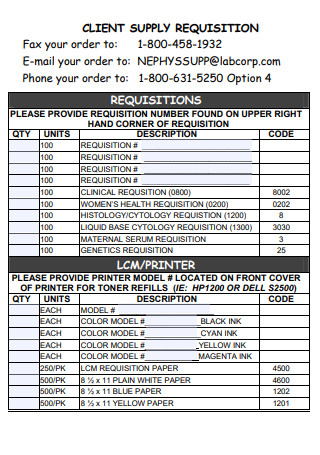
Client Supply Order Requisition
download now -

Testing Supply Order
download now -

Medline Incontinence Supply Order
download now -

Supply Order Form
download now -

Campus Service Supply Order
download now -

Screening Supply Order
download now -

Medical Center Supply Order
download now -
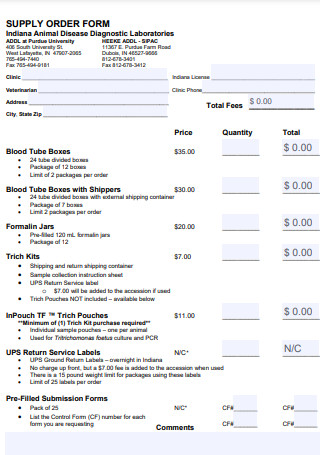
Animal Disease Diagnostic Laboratories Supply Order
download now -

Women’s Health Supply Order
download now -

Supply Order Request
download now -

General Supply Order
download now -

Contract Goods Supply Order
download now -

Laboratory Service Online Supply Order
download now -
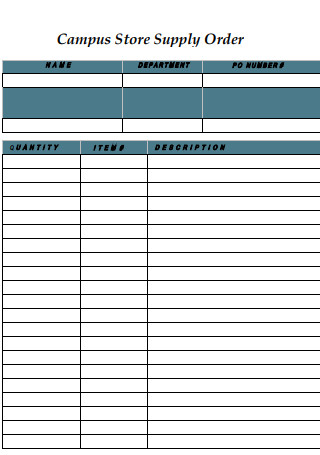
Campus Store Supply Order
download now -
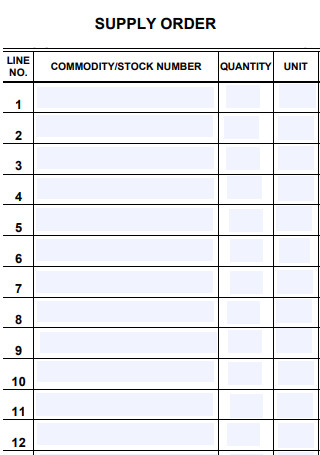
Simple Supply Order
download now -

Drivers Education Supply Order
download now -

Supply Order Template
download now -

Mobility Equipment Supply Order
download now -

Diabetes Supply Order
download now -

Free Supply Order
download now -

Central Supply Order
download now -

Incident Cache Supply Order
download now -

Booth Supply Order
download now -

Client Services Supply Order
download now -

Airport Supply Order
download now -

Municipal Supply Order
download now -

Covid 19 Supply Order
download now -

Supply Order Example
download now -

Public Health Supply Order
download now -

School Supply Order
download now -

Sample Supply Order Form
download now -

Network Supply Order
download now -
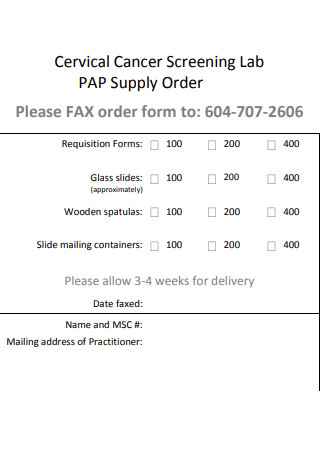
Cervical Cancer Screening Lab Supply Order
download now -

Region Supply Order
download now -

Campaign Supply Order
download now -

Purchasing Supply Order
download now -

Hospital Supply Order
download now -

Consumer Supply Order
download now -

Product Supply Order
download now -

Incontinence Supply Order
download now -

Supply Order Request Form
download now -

Health Lab Supply Order
download now -

Supply Order Resources
download now -

Tiger Paws Supply Order
download now -

Poultry Supply Order
download now -

Membership Supply Order
download now
What Is a Supply Order?
A supply order is a recorded document that lists the supply goods to be shipped, delivered, or manufactured. Typical examples are the supply of materials for building construction, supermarket products, and equipment, among others. Everything offered for purchase is incorporated within a unique order template optimized for presenting any order. On the other hand, providers are pretty picky about the blank order form templates they receive from consumers. It is always expected that it will be well-written to facilitate the interpretation and delivery of orders. Research shows that the global supply chain management market was worth 15.85 billion US dollars in 2020 and is predicted to reach almost 31 billion by 2026.
Benefits of Having Suppliers in a Business
There is one area that firms frequently overlook: supplier management. While businesses’ natural focus is on customer loyalty, that is not the only relationship they should nurture. A positive relationship with your suppliers is equally critical. Indeed, you must have one because operating your business without one is akin to driving off the road in a family car. Supplier relationship management is a profession that all firms should develop because it has a significant impact. Indeed, adopting a more strategic approach toward critical suppliers can result in enormous long-term benefits for companies. Listed below are just some of the advantages of having suppliers in your firm:
Types of Purchase Orders
As a wholesale distributor, you will undoubtedly send supply orders to replenish your inventory. Given the likelihood that you’ll also receive them, we’ve summarized the four distinct forms of purchase orders so you’ll be prepared to deal with them in either case.
Standard Purchase Order
The standard purchase order is the most often used type of purchase order. It specifies the items to be acquired, their quantities, payment agreements, and delivery date. Typically, standard purchase orders are used for one-time transactions. When a restaurant purchases new tables and chairs, it may increase a regular purchase order. If it goes to plan, this should be a one-time purchase for the restaurant, with the contract being fulfilled once the chairs are received in acceptable condition.
Planned Purchase Order
The majority of the details of a proposed purchase order are known. Available items may include the things themselves, as well as their associated cost and payment terms. The delivery date written on the delivery note is frequently undetermined. In essence, the customer agrees to a price and quantity, but not to the delivery date. For instance, a business may know that it will purchase three printers at a specific price. Once you’ve determined the required delivery schedule, you can generate a conventional purchase order. Whichever type of purchase order you choose, be sure to be brief and precise with your order details. This critical sort of contract safeguards not just the buyer but also the supplier. Therefore, if you are not currently using buy orders, now is the time to begin.
Blanket Purchase Order
A blanket purchase order consolidates multiple prospective orders into a single document. Typically, this form of purchase order details the items and total amount required. Pricing may or may not be included. If it does mention pricing, it may consist of any price concessions offered by the seller. For instance, a business may acquire copy paper reams but is unsure when or how frequently they need to order. In this case, the company may commence the purchasing process by issuing a blanket purchase order.
Contract Purchase Order
The buyer of a contract purchase order has no idea which item or things will be ordered. Instead, you and your supplier agree on terms and conditions to expect that goods and quantities will be known in the future. This purchase order form functions more like a legally binding agreement between you and the seller to buy from you in the future. Contract purchase orders, which are frequently set for a year, are essentially legal documents. During the contract term, the buyer can submit a standard purchase order that includes all necessary information for each purchase.
How To Find a Wholesale Distributor
As a small business, you may choose to engage with a single wholesale distributor or a group of them. However, finding the proper companion can be challenging. Before identifying the ideal wholesale company with whom to partner, you must first determine the products you intend to sell. Once you’ve decided what you need, you may begin researching the ideal wholesaler to serve your business.
Step 1: Recognize the distribution channels in your industry.
There are numerous routes for a product to travel from manufacturer to retailer. Wholesalers do not provide all services in the same market. Understanding the distribution channels and supply chain of your industry will assist you in locating the ideal wholesale supplier for your retail or online business. Specific merchants may have sufficient volume to circumvent jobbers, or importers may sell straight to retailers in a smaller industry. Each sector has its distinct distribution routes, which vary according to the product, area, or country.
Step 2: Consult the manufacturer initially.
Paying wholesalers reduces your profit margins. To eliminate mediators, you can begin at the source. If you’re selling branded merchandise, contact the product’s producer directly. They may market to you if your order meets their minimum order criteria. If your business is too small for them or they only distribute through established distribution channels, ask for a list of reliable distributors to contact. The fewer people you have to deal with, the lower your cost, allowing you to compete more effectively in the market.
Step 3: Make your online searches more specific.
When conducting a web search, avoid looking for generic wholesalers or distributors. Include keywords relevant to your items or niche. Consider product and model names, as well as brand names. Suppose any of the possible distributors you come across do not have an email address or phone number readily available. In that case, you can conduct an online search to discover the website owner’s contact information. The more wholesalers you locate, the more effectively you can comparison shop and obtain a sense of industry-standard rates, as well as competitive quotes.
Step 4: Become a member of industry associations, forums, and other professional networks.
Small business owners with more practice in your sector or area are frequently the best source of information regarding wholesalers. Other retailers, on the other hand, are unlikely to disclose supplier information with competitors. Spend time networking to develop the trust and connections necessary to locate the top wholesale suppliers for your small business. Participate in internet forums, which may be an excellent source of free information and assistance from other market or industry experts. Research shows that business forums are a perfect venue for networking, establishing these contacts, exchanging ideas, and seeking help. If you are pushed like many business owners, the virtual route will provide you with as much support and encouragement as attending a physical meeting.
Step 5: Subscriptions to trade publications in your industry.
Trade journals are a goldmine of information about your industry’s businesses and relationships. Almost every advertiser in the magazine is a product maker or distributor seeking to connect with you. A single copy of a trade magazine can contain the contact information for dozens of wholesalers or small manufacturers. Subscribe to online newsletters and blogs in addition to publications. These are frequently the most effective ways to stay current on daily or weekly industry news and updates.
Step 6: Participate in a trade show.
Trade exhibitions are effective methods for establishing and growing your business. These events are aimed at connecting merchants with distributors and manufacturers. Trade exhibitions enable you to meet and interact with dozens of wholesalers or manufacturers in a single day. These face-to-face interactions frequently avert misinformation or communication breakdowns that can arise when communicating with someone online. Research shows that the trade show business in the United States earned over 15.7 billion dollars in sales, estimating nearly half of the global total. In terms of distribution, over half of the revenue generated by trade fairs in the United States comes from registrations, with the remaining quarter coming from display sales.
FAQs
What is a requisition for supplies?
A Supply Request Form is a document used by employees of various businesses to place orders for things required for their everyday activity. Some firms’ departments use these forms to place orders for office supplies from the material support department.
Is a purchase order payment-guaranteed?
Purchase orders communicate the buyer’s requirements and define the business transaction‘s expectations. Because it is a legally enforceable contract, it protects the seller if the buyer refuses to pay. Also, it protects the buyer if the seller fails to provide the goods or services.
What does the phrase “cut to order” mean?
The cut order planning problem is concerned with scheduling fabric cuts for a collection of garment orders. The buyer orders a specific set of clothing to be manufactured by a defined date. This purchase includes a chart of clothing sizes and patterns for cutting each size. The fabric used to cut the order must be laid out on the cutting table to minimize the order’s cost. This layout must have a division for the pattern elements that will be layered over the fabric arrangement. The problem is mathematically modeled and analyzed. This investigation results in the development of solution techniques that have been applied on a desktop PC-based computer. The approach is demonstrated to be practical and versatile when applied to representative industry challenges.
For any business, tables, financial statements, and accounting balances are critical. However, the supply order is the central document that governs the execution of all business activities. Additionally, supply order is essential for evaluating performance and projecting trends.
